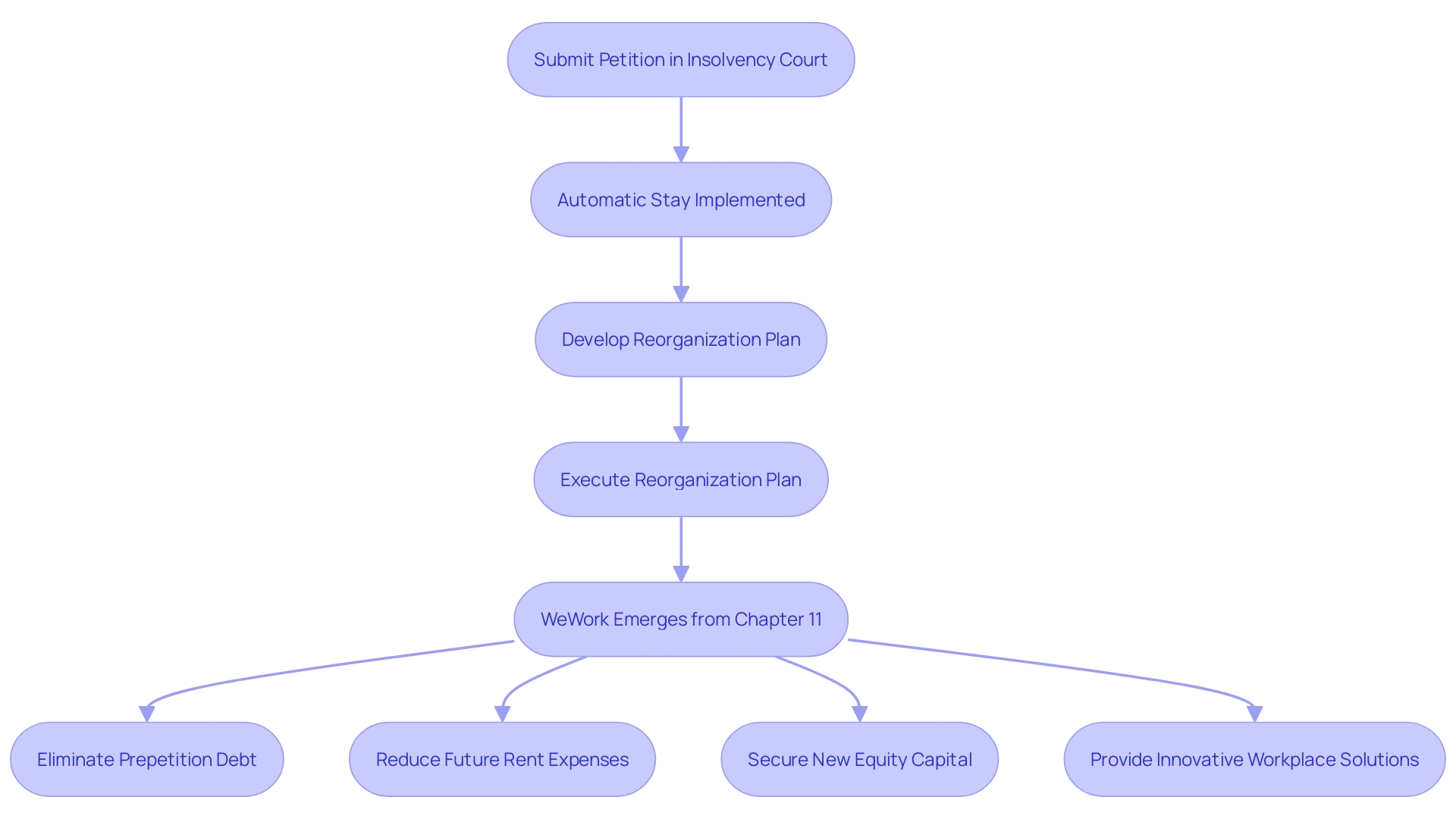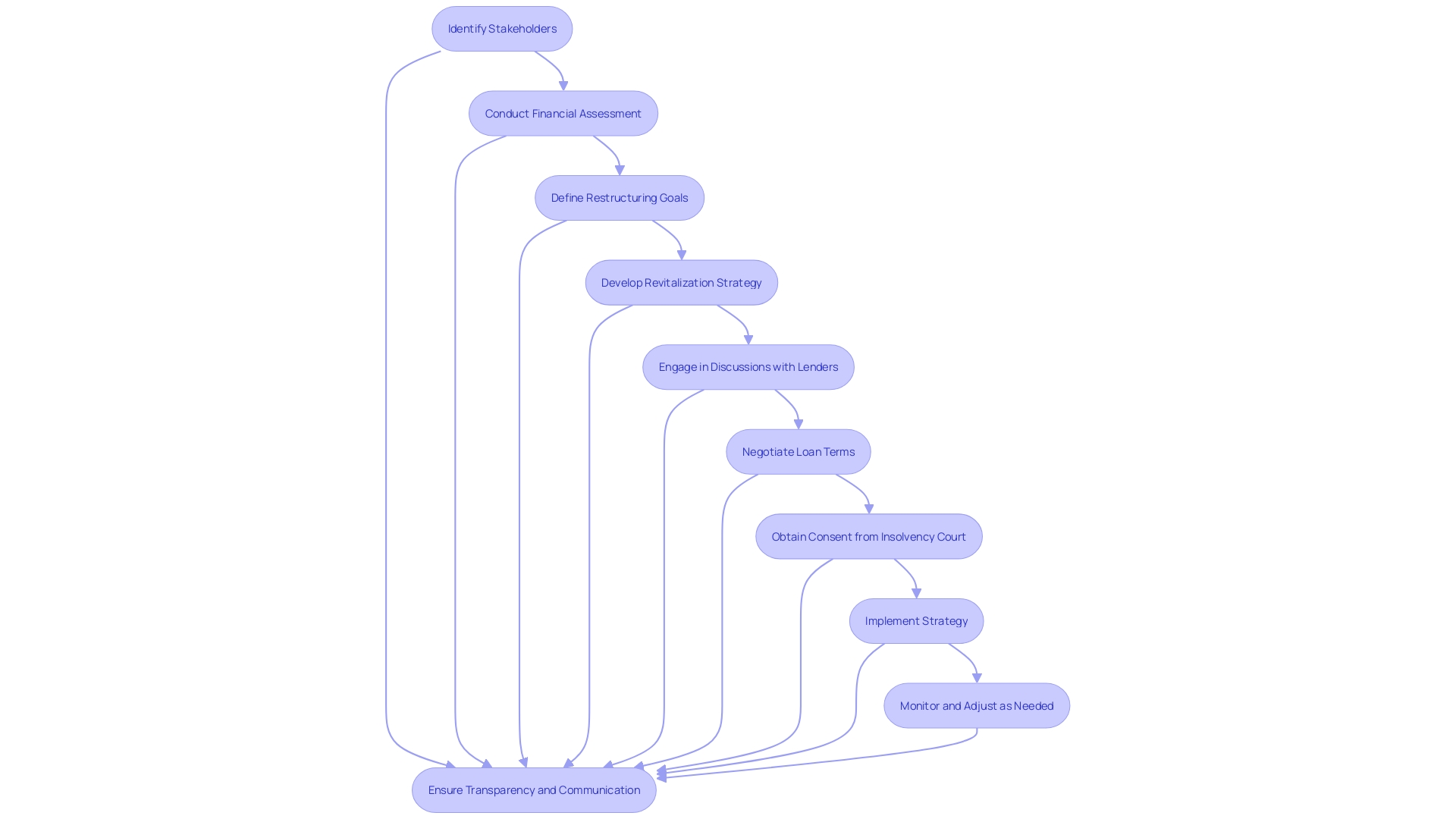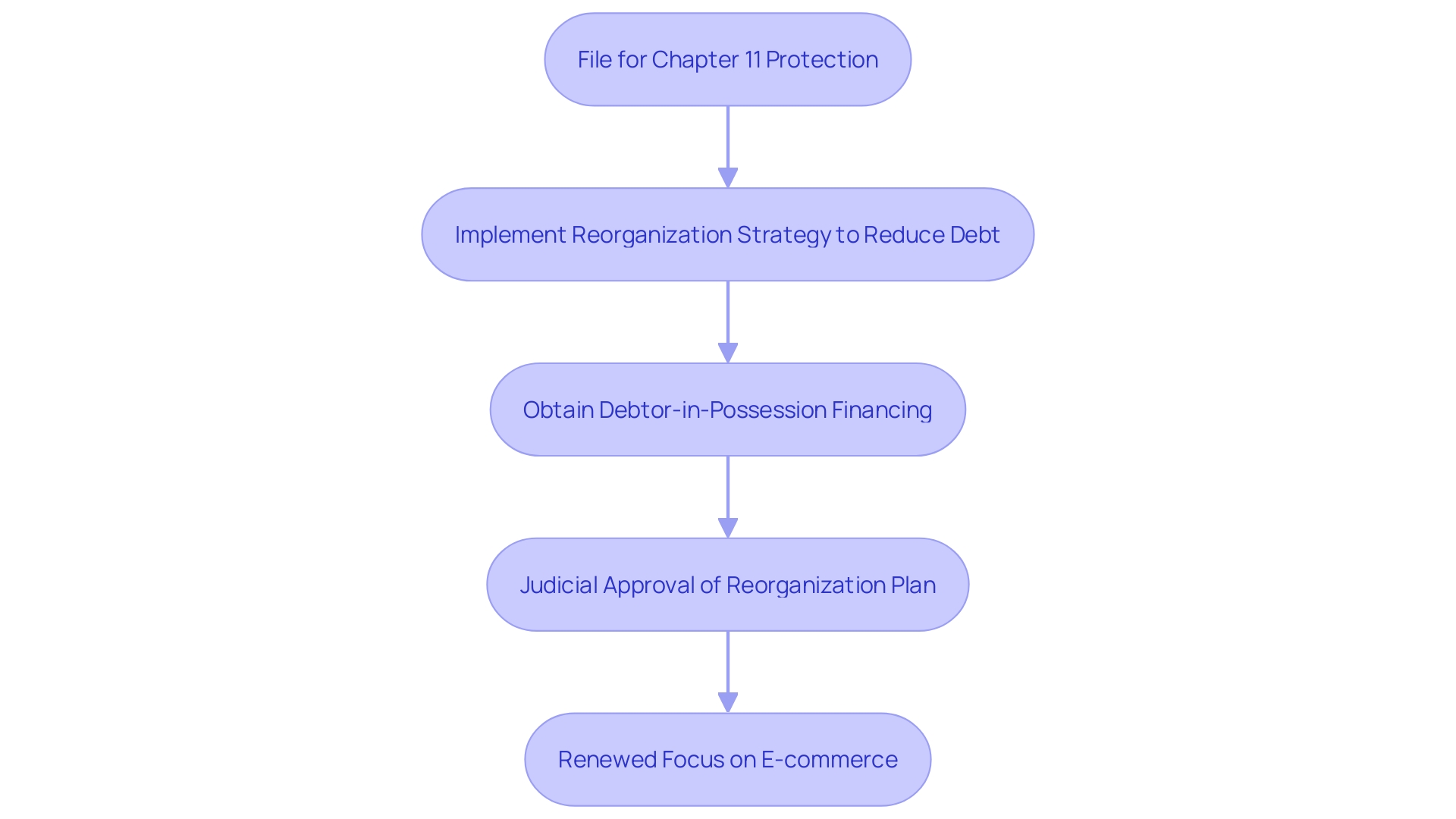Introduction
Chapter 11 bankruptcy serves as a strategic lifeline for businesses facing financial distress. This legal process enables companies to restructure their debts while maintaining operations, offering a pathway to regain stability and emerge stronger. The procedure begins with filing a petition in bankruptcy court, which enacts an automatic stay on creditor actions.
This crucial relief allows the business to formulate a comprehensive restructuring plan without the immediate pressure of creditor demands.
The importance of Chapter 11 is underscored by recent data showing a nearly 30 percent rise in business bankruptcies in the twelve-month period ending September 2023. This surge highlights the increasing reliance on restructuring mechanisms amid economic challenges. Expert opinions emphasize the necessity of strategic planning before opting for bankruptcy, advising companies to explore all possible avenues, including refinancing or mergers and acquisitions.
Partnerships with specialized services like Epiq Bankruptcy provide valuable insights and data, enabling businesses to make informed restructuring decisions with confidence.
The restructuring process under Chapter 11 involves several critical steps, including the development of a reorganization plan, negotiations with creditors, and securing approval from the bankruptcy court. Transparency and effective communication are paramount throughout this process to build trust and encourage collaboration.
Case studies, such as Neiman Marcus' successful restructuring during the COVID-19 pandemic, illustrate the potential for businesses to emerge stronger post-bankruptcy. However, challenges such as creditor resistance and operational disruptions must be managed meticulously. The role of legal and financial advisors is indispensable, guiding companies through regulatory requirements and ensuring compliance with court mandates.
A robust restructuring plan that balances immediate financial stability with long-term strategic goals is essential for navigating Chapter 11 successfully.
Chapter 11 Bankruptcy Basics
Chapter 11 reorganization acts as a strategic lifeline for businesses facing financial distress. This legal process enables companies to restructure their debts while maintaining operations, offering a pathway to regain stability and emerge stronger. The procedure starts with submitting a petition in insolvency court, which implements an automatic stay on creditor actions. This crucial relief enables the business to create a comprehensive reorganization plan without the immediate pressure of creditor demands.
The significance of Chapter 11 is highlighted by recent data indicating a nearly 30 percent increase in business failures in the twelve-month period ending September 2023. This surge highlights the increasing reliance on restructuring mechanisms amid economic challenges. For example, the American Bankruptcy Institute (ABI) has observed that the distinction between 'antecedent injunctive relief' and 'incidental injunctive relief' is crucial, as demonstrated in a landmark March 2023 decision by a Rio de Janeiro appellate court on Americans financial proceedings. This distinction ensures that distressed companies receive appropriate judicial protections tailored to their specific circumstances.
Expert opinions, like those from James Mohs of the University of New Haven, stress the importance of strategic planning before choosing to declare insolvency. Mohs recommends seeking guidance from a financial lawyer to examine all potential options, such as refinancing, issuing stock, or evaluating mergers and acquisitions, prior to moving forward with a Chapter 11 filing.
Additionally, collaborations with specialized services such as Epiq provide valuable insights and data for companies facing financial distress. Epiq's Bankruptcy Analytics subscription provides on-demand access to dynamic information, allowing businesses to make informed decisions about reorganization with confidence. Such resources are indispensable in the meticulous process of developing and executing a successful reorganization plan.

Key Components of the Restructuring Process
The reorganization procedure under Title 11 includes various essential phases, such as creating a revitalization strategy, discussions with lenders, and obtaining consent from the insolvency court. Key components include a thorough assessment of the financial situation, identification of all stakeholders, and a detailed evaluation of the feasibility of the proposed plan. Transparency and effective communication are paramount throughout this process to build trust and encourage collaboration. Utilizing advanced data and technology solutions, such as those provided by Epiq Bankruptcy, can streamline these efforts, ensuring accuracy and efficiency in handling complex tasks. Epiq's knowledge in reorganizing and financial distress issues allows businesses to traverse these difficult situations with assurance, promoting a more seamless shift and improved results for all stakeholders involved.

Case Study: Neiman Marcus Restructuring
In May 2020, Neiman Marcus filed for Chapter 11 protection following significant declines in sales exacerbated by the COVID-19 pandemic. The reorganization strategy aimed to lower the organization's debt by an impressive $4 billion, alongside renegotiating lease agreements to enhance operational efficiency. Employing a combination of debtor-in-possession financing and a support agreement for reorganization, Neiman Marcus successfully obtained the essential funds to maintain operations during the bankruptcy process. The reorganization strategy gained judicial approval in September 2020, enabling the business to surface with a strong financial position and a refreshed strategic emphasis on e-commerce. Geoffroy van Raemdonck, CEO of Neiman Marcus Group, underscored the importance of maintaining strong customer relationships and delivering unparalleled luxury experiences, even amidst challenging times.

Challenges and Considerations in Restructuring
Chapter 11 reorganization brings a host of challenges that organizations must navigate meticulously. Companies often face resistance from creditors, adding complexity to negotiations and potentially causing operational disruptions. Managing cash flow effectively while maintaining daily operations during this period is critical. 'Legal and financial advisors are indispensable in this process, guiding the organization through regulatory requirements and ensuring compliance with court mandates.'. Furthermore, companies must reduce reputational risks and tackle employee morale, which can be greatly affected during organizational changes. For instance, Tupperware Brands Corporation, despite initiating Chapter 11 proceedings, remains committed to its strategic transformation into a digital-first company, demonstrating how a well-managed reorganization can pave the way for future growth. This underscores the importance of a robust restructuring plan that balances immediate financial stability with long-term strategic goals.

Conclusion
Chapter 11 bankruptcy serves as a vital tool for businesses grappling with financial distress, enabling them to restructure their debts while continuing operations. The process begins with filing a petition, which provides an automatic stay on creditor actions, allowing companies to develop comprehensive restructuring plans without the immediate pressure from creditors. The recent surge in business bankruptcies emphasizes the growing reliance on such mechanisms for stability and recovery, highlighting the importance of strategic planning before entering bankruptcy.
The restructuring process involves several critical components, including the formulation of a reorganization plan, negotiations with creditors, and securing court approval. Effective communication and transparency are essential, as they foster trust and collaboration among stakeholders. Leveraging advanced data and technology solutions can streamline these efforts, ensuring accuracy and efficiency throughout the process.
Successful case studies, such as Neiman Marcus, illustrate the potential for businesses to emerge stronger post-bankruptcy by focusing on operational efficiency and strategic priorities. However, navigating Chapter 11 is not without its challenges. Companies must manage creditor resistance, maintain cash flow, and address reputational risks while ensuring compliance with legal and regulatory requirements.
A well-crafted restructuring plan that balances immediate needs with long-term goals is crucial for achieving sustainable success in the face of adversity.




